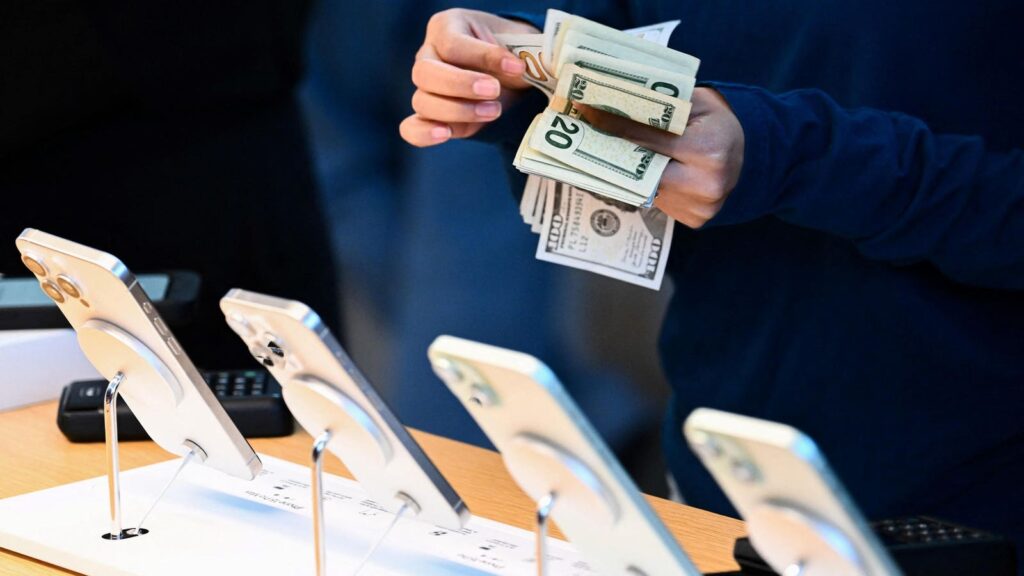The Federal Reserve Bank of Atlanta’s recently published Survey of Consumer Payment Choice from June 2024 provides a fascinating insight into the evolving landscape of consumer payment methods in the United States. According to the survey, there has been a significant shift toward mobile payment methods, with approximately three-quarters of American consumers utilizing platforms like PayPal, Zelle, Venmo, and Cash App in 2023. This trend indicates a notable increase from the previous year, suggesting that mobile payments are becoming increasingly integrated into everyday financial activities. Additionally, about 70% of consumers reported making at least one payment through mobile devices over the past year, showcasing a broader acceptance and reliance on technology for transactions.
The survey combines two methodologies: the Survey of Consumer Payment Choice (SCPC), where consumers report their payment instrument adoption, and the Diary of Consumer Payment Choice (DCPC), which captures detailed transaction records, including amounts and payment choices. This dual approach allows for a clearer understanding of consumer behavior, free from the distractions of fintech marketing and cryptocurrency hype. Insights from the survey reveal that a staggering 99% of U.S. consumers possess credit, debit, or prepaid cards. This statistic implies that only 1% of consumers are entirely cardless, while 4% remain unbanked. Interestingly, the survey highlights that the unbanked population’s reluctance often stems from negative experiences with banks or associated costs, reinforcing the notion that bank accounts may not be the only pathway to financial inclusion.
An important aspect explored in the survey is the increasing adoption of nonbank payment services, which are now utilized by nearly three-quarters of consumers. This suggests a significant shift towards alternative financial solutions beyond traditional banking institutions. The issue of the unbanked is multifaceted and increasingly relevant in today’s economy. Many individuals may not find bank accounts viable, given their associated fees and rigidity. Companies like Klarna are beginning to innovate by introducing account-like products aimed at providing consumers with greater flexibility and control. This suggests that consumers are exploring various options for managing their finances and conducting transactions.
In a notable revelation, the survey also highlighted the continued use of checks among American consumers. While the decline of checks is anticipated as online payment methods gain prominence, nearly half of the respondents reported having written a check in the past month. This statistic surprises many, considering the rise of digital alternatives. The demographic differences play a crucial role in explaining this phenomenon; older generations are more likely to use checks regularly, while younger consumers tend to rely on digital payments. Interestingly, despite the overall decrease in check usage, the persistence of checks in certain demographics points to the importance of understanding how generational differences influence payment preferences.
Alongside checks, cash usage remains a compelling topic within the survey findings. The average cash held by U.S. consumers has seen an upward trend since 2019, increasing from $60 to $81 in 2023. Despite this, a significant portion of younger consumers express discomfort with cash transactions, indicating a broader shift towards digital payment methods. This trend is consistent with findings from Marqeta’s 2024 State of Payments Report, which reveals that nearly three-quarters of consumers are unfazed by the prospect of a cashless society. Moreover, certain cultural dynamics contribute to an increasing awkwardness surrounding cash payments, particularly among younger adults. As society inches closer to digital transactions, the role of cash in daily life continues to evolve.
The sustained higher levels of cash in circulation present a curious contradiction in the overall trend toward digital payments. While the volume of cash printed remains elevated, its practical usage often raises questions regarding its role in everyday transactions. Notably, the prominence of larger denomination bills, such as the $100 bill, hints at the possibility of cash being utilized for purposes beyond conventional spending. Additionally, the existence of substantial amounts of cash not actively circulating in the economy raises further inquiries into informal transactions and the hidden economy. As consumers navigate this evolving landscape, the survey emphasizes the importance of understanding their payment choices while recognizing the adaptability and complexity of modern financial needs. In this age of rapid change, payment preferences reflect broader economic, cultural, and technological trends that continue to shape the way American consumers engage with their finances.

